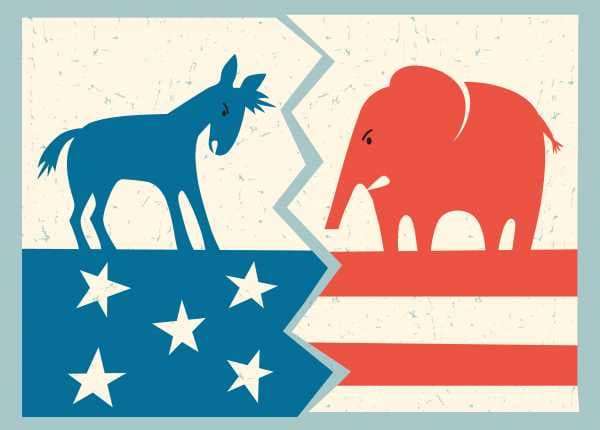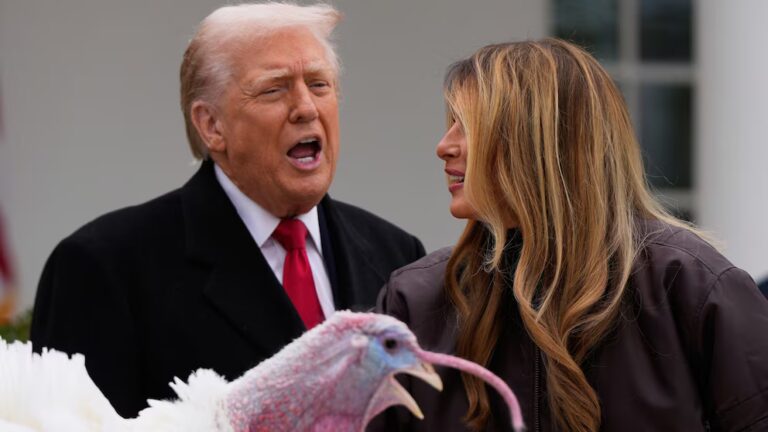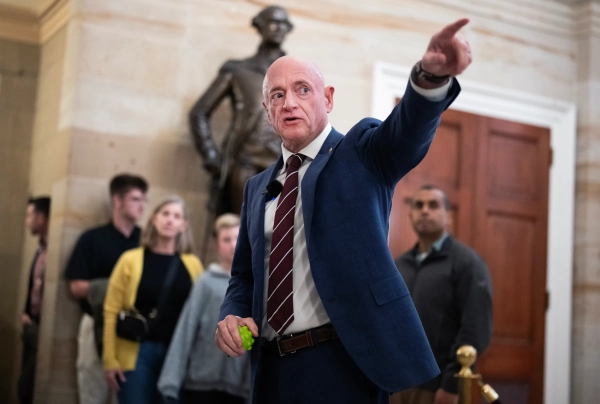
“Of the many factors that make up your worldview, one is more fundamental than any other in determining which side of the divide you gravitate toward: your perception of how dangerous the world is. Fear is perhaps our most primal instinct, after all, so it’s only logical that people’s level of fearfulness informs their outlook on life.”
That’s political scientists Marc Hetherington and Jonathan Weiler, writing in their book Prius or Pickup, which marshals a massive trove of survey data and experimental evidence to argue that the roots of our political divides run so deep that they make us almost incomprehensible to one another. Our political divisions, they say, aren’t about policy disagreements, or even demographics. They’re about something more ancient in how we view the world.
Hetherington and Weiler call these worldviews, which express themselves in everything from policy preferences to parenting styles, “fixed” versus “fluid.” The fixed worldview “describes people who are warier of social and cultural change and hence more set in their ways, more suspicious of outsiders, and more comfortable with the familiar and predictable.” People with a fluid worldview, by contrast, “support changing social and cultural norms, are excited by things that are new and novel, and are open to, and welcoming of, people who look and sound different.”
What’s happened in recent decades, they argue, is that politics in general, and our political parties in particular, have reorganized around these worldviews, adding a new, and arguably irreconcilable, difference into our political divisions. That difference is visible in everything from what we think to where we live to how we shop, but it’s particularly apparent in how hard it is for us to understand how the other side views the world.
Over email, Hetherington and I discussed his findings, and what they mean for American politics.
Ezra Klein
There’s a paragraph in your book I’ve been thinking about since I read it. You write, “America has had [political parties] basically forever and the country hasn’t always been polarized. For political parties to be polarizing, people need to feel that particular identity intensely.”
What’s the difference between being a Democrat, having a Democratic worldview, and having a Democratic identity?
Marc Hetherington
The ideological conflict that used to divide the parties was the size of government. The Democrats said bigger, the Republicans said smaller. Importantly, most Americans didn’t have intense commitments on this question. In addition, party elites could compromise across it. Hence, the political conflict spawned by it wasn’t rancorous most of the time.
That changed in the late 20th century, accelerating into the present day. The dividing line between the parties was no longer a philosophy about governing (a political ideology — more or less government). It evolved into differences in philosophy about life (a worldview — is the world a basically safe place to explore, or is it a dangerous snake pit to hunker down against).
If you think the world is dangerous, safety is always the No. 1 concern. When it comes to physical safety, letting your guard down against adversaries could be disastrous. If you think the world is safe, however, discriminating against groups that have generally been down the racial, gender, or sexual orientation hierarchy is the real sin.
Ezra Klein
So the argument is that a party affiliation or worldview becomes an identity when it’s so intensely felt that it’s operating almost sub-rationally, and that that’s happened with the safe/unsafe divide? That seems odd to me. Why would politics have reorganized around visions of safety, particularly in an era when the world was getting, overall, safer?
Marc Hetherington
Not exactly. A worldview isn’t an identity. It is a way of understanding the nature of the world. Is it safe or dangerous? Should we protect traditional ways of doing things, or is it safe to challenge them?
Today’s political acrimony results from Americans’ worldviews becoming married to their partisanship. Because people’s worldviews organize their whole life — not just the political part of it — a party identity defined by them produces intense conflict. Opposing worldviews have always existed in America (and probably since humans have been around). What is new is that they are now mapped neatly onto Americans’ party identities.
Evidence is everywhere. The clear theme of the 2016 GOP convention was that life in 21st-century American is perilous. “American carnage” was central to Trump’s inaugural. His recent statement on standing with Saudi Arabia literally began with, “The world is a very dangerous place!”
When Democrats see, hear, and read these things, they just don’t get it. Although they see danger, it is in the form of Republicans who perceive people who look or sound different as threats to national security. Modern-day Democrats see old traditions that discriminate against minorities, women, and LGBT people as the real threats to American life.
The reality that the world is actually safer hardly matters. What matters to today’s politics is that the bases of the two parties see it much differently.
Ezra Klein
That makes sense to me as an explanation for why partisan identities seem so much deeper, but it doesn’t really explain why American politics would’ve reorganized around understandings of threat in an age when the world, overall, was getting safer. What’s the explanation for that?
Marc Hetherington
The issues that produced this “worldview evolution” include race, law and order, gender equality, religion in the public sphere, LGBT rights, protecting the country from terrorism, gun rights, and immigration.
A cascade of new issues rose to subsume the old New Deal conflict that had divided the parties. Beginning in the 1960s with the Democrats’ embrace of civil rights and the Republicans’ “Southern strategy,” the process continues to this day, involving a range of issues that have one thing in common: The Democrats have consistently taken the more “modern” or “open” side of them, while the Republicans have taken the more “traditional” or “closed” one. This is why Americans’ worldviews now map so neatly onto their party identifications.
But what do race and immigration have to do with gender equality? What do the domestic issues, in general, have to do with keeping Americans secure from terrorist threats? Our research shows that Americans’ preferences on all these issues turn on the same thing — their worldviews. People at opposite ends of the worldview spectrum differ by 40, 50, and sometimes 60 percentage points on all these matters.
If your worldview suggests the world is dangerous, the specter of terrorism will, of course, be especially concerning. But social change is potentially dangerous, too. Existing traditions and hierarchies have maintained order for millennia. Racial and gender equality threaten those hierarchies. LGBT people challenge those traditions.
If you think the world is safe, you don’t see refugees as trying to infiltrate the country to do harm. They need our help. You don’t see identity groups vying for equality as threats. Instead old traditions and hierarchies are the real threats because they perpetuate discrimination.
Ezra Klein
One concern I have about the fixed versus fluid division is whether it reflects the cause of our disagreements or the consequence of them. Politics in America cuts quite sharply along demographic lines. But is it really true that, say, white Americans are overwhelmingly more likely to be fixed in their worldview than African Americans? Or is it that white Americans lean toward a political party that is preaching a fixed view as a response to our political divisions, and as a way to restore a past it prefers?
I guess another way of asking this is whether a fixed worldview is itself fixed, or whether it’s a response to certain political demographic conditions at certain times.
Marc Hetherington
The racial split in the US is not a worldview split. On worldview, African Americans would actually fit better in the GOP. Blacks, white evangelicals, and working-class whites are the groups most likely to have fixed worldviews. For African Americans, in particular, the world has, after all, been a dangerous place.
Remember Republicans have been demeaning African Americans to attract the white working class for decades. Fixed worldview whites perceive African Americans and immigrant groups as threats. But African Americans and immigrant groups don’t view themselves as threats. Republicans are the threat to them. Group identity, not worldview, drives their party choices.
People’s worldviews remain pretty stable over time. It is a deeply ingrained understanding of how the world works, which guides decisions in all different parts of people’s lives. That being said, we find that the fluid become “situationally fixed” in their political preferences when they are frightened.
Take 9/11, for example. Americans across the worldview spectrum were petrified. In the short run, the more fluid became more willing to trade civil liberties for security, more willing to support the use of torture. The fixed were already likely to support those things before the attacks. As time passed, however, the fluid went back to valuing civil liberties and opposing torture. Their worldviews hadn’t changed.
That being said, our research makes clear that fear benefits Republicans in a worldview divided system. Opinions creep to the right, at least for a time.
Ezra Klein
This brings up something else I wanted to ask you about in the book. You argue that there’s an asymmetry in truth-seeking between the two sides — that “misperceptions about climate change, crime rates, and the side effects of vaccinations all find their staunchest defenders on the political right, rather than the left.” You go on to say that “evidence is piling up that those on the political right seem to have a stronger tendency to take steps to buttress their worldview than those on the political left.”
On the one hand, that very much seems to describe a political party in which Fox News is the most trusted news source and Donald Trump, a genuine conspiracy theorist, is the leader of the party. It’s also a hard conversation to have because even talking about differences in truth-seeking sounds insulting and biased, and it’s easy enough to come up with individual examples of lefties who believe crazy things (though left institutions seem more robust against those crazy things). Can you walk me through the evidence that convinced you?
Marc Hetherington
You express a concern about being seen as “insulting and biased” to conservatives, a concern we share. But it seems an asymmetric one. When did you last observe conservatives worrying that about exaggerating liberal pathologies? Regardless, we don’t argue there is some “problem” with conservative Americans. The problem starts with conservative leaders.
The simple fact is that Republican leaders more often traffic in falsehoods than Democratic leaders do — climate change denial, birtherism, suggesting voter fraud is rampant, and more. These are not positions of the conservative fringe. The president of the United States himself has embraced all these falsehoods. If Democratic leaders were similarly likely to push false narratives, more Democrats would believe them.
Conservative media amplify these falsehoods. This is what links what leaders say and do to what the public believes. Liberals tend to rely on a range of liberal and mainstream news sources. Conservatives tend to rely on a much smaller number of highly ideological sources. According to a 2014 Pew study, consistent conservatives expressed the same level of mistrust of ABC News as consistent liberals did of Sean Hannity.
Hence, conservative Americans are more likely than liberals to believe falsehoods about the other side. For example, Democrats were about 12 points more likely than Republicans to say that the Bush administration directed flooding to parts of New Orleans during Katrina. But Republicans were 34 points more likely to believe Obama was born in Kenya than Democrats and 32 points more likely to believe that Obamacare included “death panels.”
That doesn’t mean that there is no biased thinking among liberals. They, too, are more willing to support or oppose a policy because it is or isn’t being carried out by their team. But skepticism about basic facts does, in fact, differ markedly by party and ideology.
Ezra Klein
I’m very interested by the idea that the problem starts with conservative leaders. I’ve seen a lot of studies about how individual liberals and conservatives respond to misinformation in laboratory or survey conditions and the results usually don’t differ that much. And yet conservative institutions, like Fox News and the Republican Party itself, have spun off into dedicated peddlers of misinformation. It seems to me that there are two ways of conceptualizing this:
1) There are differences on the individual level between conservatives and liberals — i.e., conservatives respect authority more, or are more sensitive to threat — that are laddering up to the institutions they create or demand.
2) There’s something that’s happened in the conservative institutional ecosystem that’s led to it evolving away from truth-seeking standards and toward whatever it is that it’s become.
So when you say you blame conservative leaders, are you saying you buy some version of the second explanation rather than the first? If so, why?
Marc Hetherington
We think the two explanations are related and difficult to disentangle. There are likely individual-level differences that ultimately drive partisan and media institutions to provide misinformation. You’re right that researchers have yet to demonstrate many differences in how liberals and conservatives react to misinformation in the laboratory.
I posed this question to Brendan Nyhan, the leading scholar on political misinformation. His sense is that there may be something in the psychology of liberals and conservatives that causes them to react differently to misinformation, but at this point, the evidence is thin. This is because it’s difficult to determine whether conservatives express more belief in misinformation than liberals because they are more prone to believe it or because they are exposed to so much more of it.
Sure, there is partisan media on the left, but its audience is much smaller and it lacks misinformation peddlers like Rush Limbaugh and Alex Jones. Why the much higher demand on the right? We think the answer must lie partially in the individual differences between liberals and conservatives.
The most likely reason would be a differential need for what psychologists call cognitive closure. Those we consider having fixed worldviews have a greater need for closure which suggests a greater need to avoid cognitive dissonance. They therefore are more likely to believe information that confirms their worldview. These differences may drive the supply of misinformation coming from political elites to some degree.
What’s for certain is that those who hate their opponents will be more willing to believe the worst about them. And Republican leaders have been bolder about exploiting that hatred of the other side than Democratic leaders have.
Ezra Klein
Let me close by asking you the question I always dread asking. I can imagine the pessimistic, or maybe even just realistic, story in which these trends simply continue. What’s the optimistic story about what can be done?
Marc Hetherington
I’m an optimist and even I can’t generate much optimism now. The hatred of our opponents that accompanies a party system divided by worldview is self-reinforcing and, ultimately, dangerous.
We appear to be approaching a crucible moment. Robert Mueller appears ready to produce evidence that the Trump campaign colluded with Russia to help win the presidency. Federal law enforcement has already indicated Trump himself broke campaign finance laws. Yet I suspect Republicans will greet both developments with a collective shrug. When you hate your opponent as much as Republicans hate Democrats, it is hard to give an inch on anything. Their response will cause Democrats to hate Republicans even more than they do now. And so on and so on.
For things to change, something must supplant these primal worldviews as the dividing line between the parties. That impetus must come from the top. Leaders set the grounds of debate. Ordinary people follow their lead. Democrats, for their part, seem to be trying. In focusing on health care and wages in 2018, they are making the dividing line about the size of government. It is a winning strategy.
I worry, though, that politics divided by worldview may be the natural state of things. We just didn’t realize that because we grew up in an anomalous time when the divide was about the size of government. Looking back over centuries, politics has almost always been fought between forces who favor the traditional and those who favor modernity. Governments didn’t have the resources to do much, so it couldn’t be the central source of division. We’ve gone back to the future.
As chapter seven of our book shows, the same process is playing out in Europe. Bolsonaro’s victory in Brazil suggests the same thing there. It is not a happy story.
Sourse: vox.com






